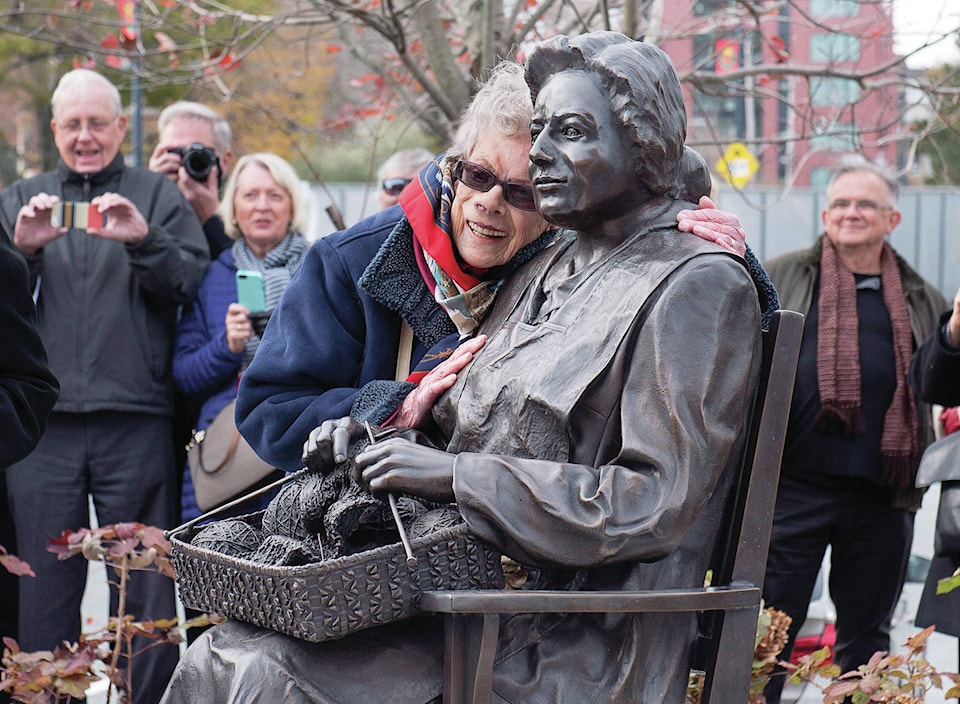HALIFAX — They sang and played accordion, knitted scarves and sewed quilts, and served up heaping plates of roast beef and potatoes to hundreds of hungry servicemen.
Now, more than 70 years later, Nova Scotia women and girls are being saluted for their volunteer work during the Second World War with a new monument on the Halifax waterfront.
“This is the first monument to women in the city’s 268-year history,” said Janet Guildford, chairwoman of the Halifax Women’s History Society said at its unveiling Thursday.
“We’re elated to be the first to break the bronze ceiling in Halifax.”
The bronze sculpture, called “The Volunteers,” features three life-sized figures from three generations: A young girl pulling a wagon full of salvaged metal, an African-Nova Scotian woman holding a tray of coffee and sandwiches, and an older woman seated with a Mi’kmaq basket and knitting.
“Heroics can be hidden in those kinds of daily activities. But they are heroic just the same,” said award-winning artist Marlene Hilton Moore. “We don’t honour enough the work that women do behind the scenes.”
The society raised more than $500,000 to recognize the unsung wartime volunteers.
Board member Wanda Gordon Lewis said the bronze figures represent all women.
“There are no names on any of the monuments. It’s your mother, your grandmother, your great-grandmother,” she said. ”When anybody walks by these monuments they can see themselves and that’s really glorious.”
Of the many statues across the city, the new monument is the first to recognize women’s vital role in history and feature an African-Nova Scotian woman.
“When I was a child, I always asked ‘Where am I in this city?’” Gordon Lewis said. “Today I am released from pain because I can see myself. It’s a wonderful thing.”
Her mother, 96-year-old Margaret Gordon, volunteered at the Gerrish Street Hall in Halifax’s north end during the war. The city was in many ways segregated, and black servicemen from across the country received meals and entertainment.
“A lot of the black men couldn’t go to the other canteens, but they were always welcomed at Gerrish Street Hall,” Gordon Lewis said. “My mother was a singer. She sang inspirational songs and the old hymns to give them courage before going off to war.”
Three women who volunteered in Halifax during the war unveiled the sculptures.
Margaret Gordon unveiled the figure of an African-Nova Scotian woman smartly dressed in a 1940s suit and balancing a tray brimming with food.
Charlotte Guy Jeffries, an accomplished pianist and accordion player who entertained soldiers in concert halls and on ships anchored in the harbour, unveiled the figure of an older woman seated with knitting and an intricate basket designed by Mi’kmaq artist Margaret Pelletier.
And Joyce Purchase revealed the sculpture of a little girl in overalls tugging a wagon with broken tricycles and old kitchen pots to be recycled into materials for the war effort.
